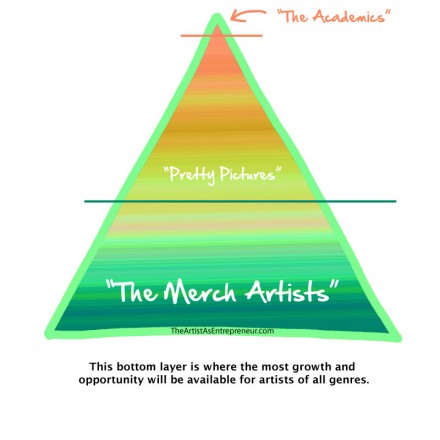Lezley Davidson’s Art World Pyramid reminds me of the food pyramid. At the top, you have what there’s a little bit of, and the bottom, you have a very broad base. The food pyramid is more about ideal proportions you should eat, but Lezley’s art pyramid is more about the makeup of the overall art market/industry.
This art world pyramid groups artists into three main groups: the academics, the pretty pictures, and the merch artists.
The Academics
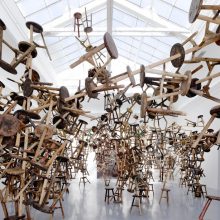
This is the smallest and most elite group — mostly MFA-educated artists with a clear understanding of how their art functions in regard to the context of art history, consciously participating in a generations-old dialogue. Success is measured by a retrospective at a major museums like MoMA or The Met. Millions of dollars may be at stake on a single transaction. Artists at this level tend to make their living through grants, if not selling their work to millionaires. It’s “blue chip” art that is often challenging to viewers, found at the mega art fairs like the Venice Bienniale or Art Basel Miami. Damien Hirst is the first that comes to my mind when I think of this category. image:ai weiwei, bang, installation view, 2013 image © designboom
The Pretty Pictures
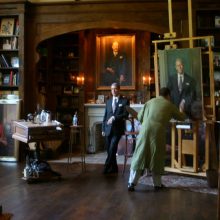
This larger group might also be called “gallery artists” as most of them make a living selling their art through gallery representation and dealerships. The art produced here is more “market” driven, largely dependent on the gallery system and art fairs. More and more of the “pretty picture” artists are becoming independent from galleries due to the growth of the Internet and social media and the like, selling their art directly to collectors. This is probably what most people think of when they think of artists. Thomas Kinkade is probably the most notorious in this category. One I really admire is Michael Shane Neal. He does fantastic portraits and landscapes, working in a traditional manner.
The Merch Artists
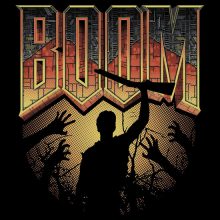
The final category is the broadest in terms of subject matter and size, and up until recently used to be pretty looked-down up on in the art world, just a step above commercial art or graphic design. In fact, a lot of these artists probably have other jobs as graphic designers. The art in this category is very market- and trend-driven. These artists aren’t afraid to riff on something in popular culture, playing off a meme like LOLcats or Doctor Who or Star Wars. I think of my friend jimiyo who has been rather successful as a t-shirt designer and curator. This segment doesn’t shy away from “low-brow” subjects or aesthetics. It’s usually more fun and doesn’t take itself as seriously as the academics. But there is a lot of room for growth.
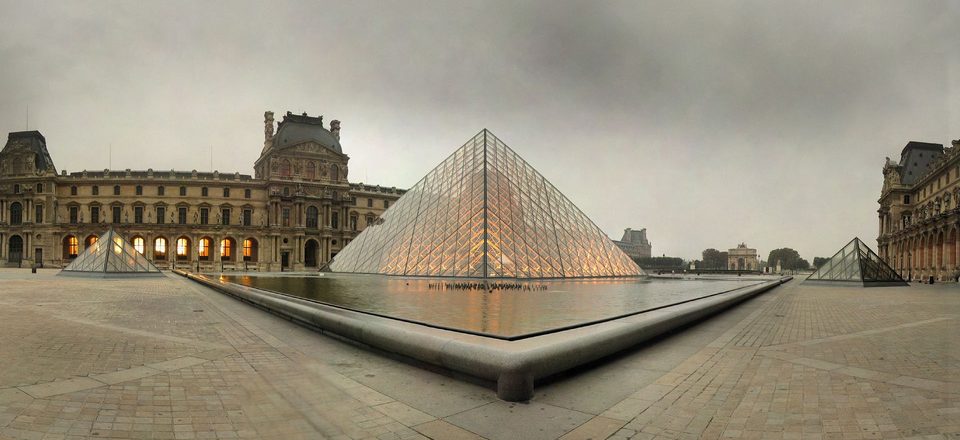
Lezley goes into a lot more detail on her blog and especially her podcast so you should go check it out.
So as Lezley says:
The point of the separation into categories is to illustrate that each distinct artist group needs a VERY different marketing plan to see success in their little art universe.The question now is, what part of the art market do you fall into? Personally, I think I fall somewhere in the “Pretty Pictures” (gallery) section. What about you? Please share in the comments.


